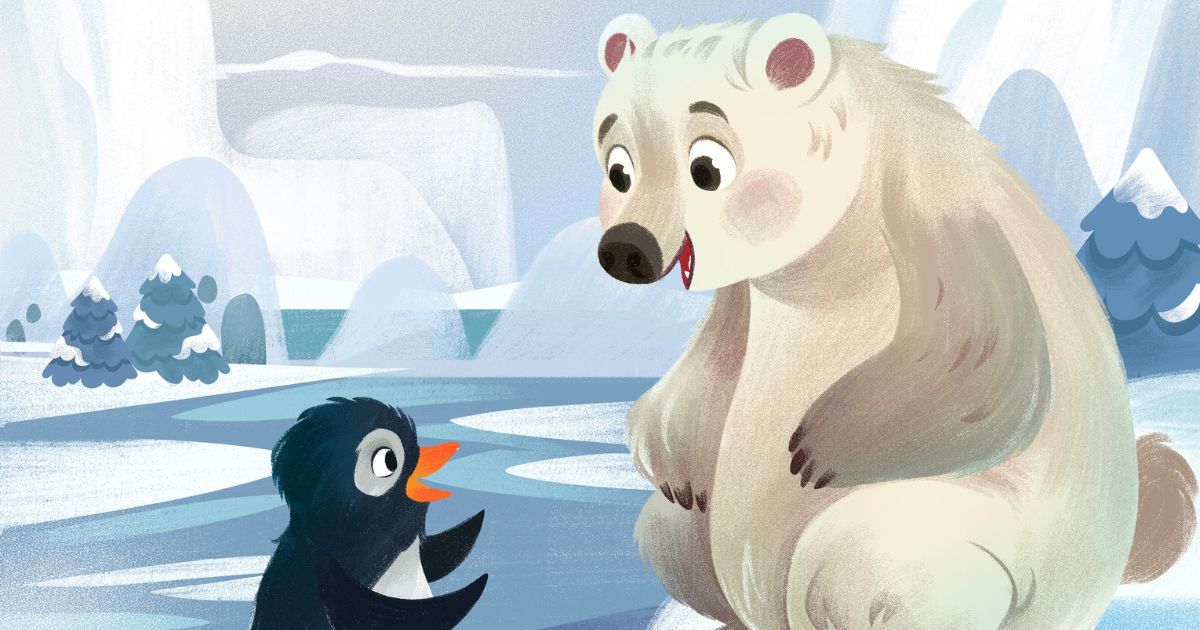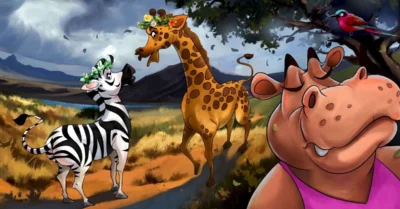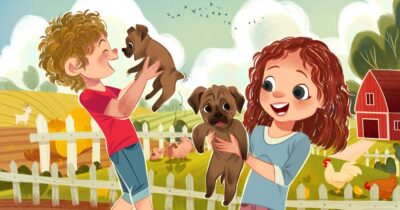What if one image could take a child’s mind off to imaginary worlds full of wonder? In the realm of children’s fiction books, there is no more powerful force than illustrations. From picturesque landscapes to fanciful characters, the beautiful illustrations enhance and liven up the story and immerse kids in colorful plots.
How do illustrations engage a child’s mind and inspire creativity? Every page has a visual delight, stimulating children’s imaginations while they empathize deeply with the characters and plot. The text-image combination stirs curiosity and inculcates a love of reading. As we delve into the world of fiction children’s books, we will discover how these captivating illustrations ignite a passion for storytelling and foster an enduring appreciation for the magic that lies within the pages.
The Importance of Illustrations in Children’s Fiction
Imagine a story, one in which the words bounce off the page, fueled by animated, colorful images that stir the mind’s creativity. Drawings are not just for decoration in children’s fiction but essential plot aids that bring the book to life. But how do such images aid in reading?
Illustrations give children context and feeling, making them see the characters and places in a way that makes the text seem more humane and immersive. They raise curiosity, questions, and arguments about the plot and characters. Moreover, it has been observed that pictures have been shown to aid in understanding and recall for early readers. Children can retain the story more effectively if pictures match the text. This visual and textual interplay creates a richer reading experience, fostering a love for books and storytelling that lasts a lifetime. Drawings, after all, open the creative potential of children’s minds.
Different Types of Illustrations in Children’s Books
There is an interesting array of illustration styles for children’s books, each with its own particular style and appeal.
Traditional Illustrations
Classical illustrations are typically done by hand, which makes it feel nostalgic and warm. These heirloom images can express feelings and details that intimately engage young readers, allowing them to connect to the tale. The flaws and texture of the classical artwork also inspire children to imagine their versions of the characters and settings.
Digital Illustrations
Digital illustrations, on the other hand, have become incredibly popular in recent times. With its ability to produce rich colors and complex patterns, there is virtually no end to what one can create with digital art. Illustrators can wiggle around and play around with styles and techniques and produce interesting visuals that young, tech-savvy eyes can easily get lost in.
Mixed Media Illustrations
Mixed media artworks combine different art forms, including photography, painting, and collage. This dynamic process generates vibrant imagery that stimulates children’s senses and fosters the imaginative process, with each page a different experience to explore further.
Popular Illustration Styles for Children’s Books
In the enchanting world of children’s books, illustration styles serve as gateways to imagination, each with a unique allure.
Whimsical Illustrations
Whimsical illustrations transport young readers to fantastical realms filled with playful creatures and vibrant colors. Such designs not only catch the eye but spark the imagination, making kids go on their own adventures and discover endless possibilities.
Realistic Illustrations
Conversely, realistic drawings add depth to narratives, capturing true feelings and experiences. These pictures have empathetic characters and situations, so the illustrations touch children’s hearts, helping them to become compassionate and aware of their existence through others’ perspectives.
Abstract Illustrations
Abstract drawings defy the usual patterns and ask kids to see art in their way. This artistic freedom fuels creative thinking because kids delve into the vast array of symbols behind shapes and colors and engage their imaginations and artists within.
Cartoon Styles
Cartoon styles bring a fun dose of humor to the table, with distorted characters and situations that tickle the funny bone. It is fun, keeps children’s reading entertaining, and gives a lot of lessons in laughter.
Collaborating with Illustrators
When designing a children’s book, visuals count as much as verbal descriptions, so it is very important to choose the right illustrator. The visual aesthetic of an illustrator is the thing that can lift a story and make it a visual treat that is absorbing for young readers.
When authors want to convey their vision, they should begin by coming up with a short and sweet brief on what the book is about, its characters, and how it will feel. Showing reference pictures, discussing color schemes, and showcasing certain styles can fill the distance between an author’s vision and the illustrator’s execution. It’s important to keep in touch throughout the illustration process to work together and ensure that the final artwork aligns with the author’s vision.
Hiring seasoned children’s book illustrators offers the best of all worlds. These artists understand visual storytelling and are technically adept at it. Their knowledge can translate into new concepts and captivating illustrations that capture readers’ attention, making the book more memorable and valuable.
The Impact of Stunning Art on Children’s Imagination
Beautiful artworks stimulate the child’s imagination, turning words into journeys leaping off the page. Rich colors, fine-grained details, and interesting characters take children into fantasy, inspiring them to be creative and imagine their own stories.
Books such as Maurice Sendak’s Where the Wild Things Are, or Eric Carle’s The Very Hungry Caterpillar reveal the power of great art. Such classics engage children’s senses and drive them to dream, leaving impressions that remain after the final page has been closed.
Understanding the Importance of Fiction Children’s Books in Child Development
Fiction children’s books are more than just delightful stories; they are essential for nurturing a child’s growth. With vivid narratives and likable characters, these books teach young children to empathize, think critically, and solve problems.
But why are they so powerful? Fiction allows children to experience various views and feelings safely and imaginatively. From lessons of morality threaded into stories to fostering imagination, they are cognitively and emotionally important. Children build the foundation for a lifelong love of learning and discovery by immersing themselves in fictional worlds.
Wrapping Up
Fiction books with stunning illustrations can appeal to children and inspire their imagination. With brightly colored paintings and enthralling tales, they inspire curiosity, a love of books, and boundless imagination. Illustrations, whether traditional, digital, or hybrid, turn words into immersive journeys of wonder that leave a mark.
About the Artist
Milan Samadder aims to ignite children’s imagination with his stunning artwork that can convert any story into a visual treat. Compassionate about illustrations, Milan’s work reflects your vision and his unique style to take children’s minds to another wonder-world. You can check out Milan’s portfolio to learn more about his work and connect with him to create a masterpiece for your next story.




